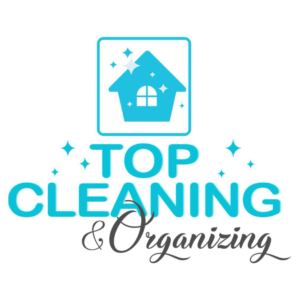Key Takeaways:
- Post-renovation cleaning ensures your space is dust-free and livable.
- A detailed checklist and the right supplies are critical for an efficient clean.
- Dust removal and attention to high-traffic areas like kitchens and bathrooms are essential.
Why Post-Renovation Cleaning is Essential
After a renovation, your home may look beautiful, but it can still feel like a construction zone. Dust and debris left behind can affect your health, especially for those with allergies or respiratory conditions. Thorough post-renovation cleaning ensures you can fully enjoy your new space while also preventing damage to new fixtures and finishes.
Benefits of a Clean Space Post-Renovation
- Ensures HVAC systems function efficiently.
- Reduces health risks from dust and allergens.
- Protects new surfaces and fixtures from damage.
Preparing for the Big Clean: Your Checklist
Why a Checklist is Crucial
Creating a comprehensive cleaning checklist is your first step. It helps you cover every corner of your home, from light fixtures to floors.
What to Include in Your Checklist
- List all rooms and areas that need attention.
- Include cleaning tools like microfiber cloths and HEPA vacuums.
- Plan your cleaning process to be efficient and manageable.
The Right Cleaning Supplies for the Job
Essential Cleaning Supplies
Choose eco-friendly supplies that are safe for your health and the environment. Using the right tools will make the job easier and more effective.
- Microfiber cloths for trapping fine dust.
- HEPA vacuum to capture airborne particles.
- Mild cleaning solutions for stubborn stains.
How to Use Each Tool
- Use a microfiber cloth for surface dust.
- A HEPA vacuum is ideal for carpets and upholstery.
- For floors, a damp mop with a mild solution works best.
Dust Removal: The Top-to-Bottom Approach
Step-by-Step Dust Removal
Start at the top of the room and work your way down. This ensures that dust falling from higher surfaces gets cleaned up as you move to the floor.
- Ceiling fans, light fixtures, and crown molding should be your first targets.
- Work your way down to windowsills, baseboards, and finally, the floors.
- Use a vacuum with a HEPA filter for thorough dust removal.
Focus on High-Traffic Areas: Kitchens and Bathrooms
Why These Areas Need Special Attention
Kitchens and bathrooms tend to accumulate the most dust and debris during renovations. Deep cleaning these areas ensures that they are not only dust-free but also sanitary.
- In the kitchen, wipe down all surfaces, including appliances.
- In the bathroom, clean tiles, grout, and fixtures thoroughly.
- Don’t forget to clean inside cabinets and drawers.
Dealing with Stubborn Debris
Tackling Tough Messes
Renovation often leaves behind stubborn debris. Here’s how to tackle it without damaging your surfaces:
- For carpets, use a vacuum with a beater bar.
- For hardwood floors, a damp mop will lift dust without harming the finish.
- Use a broom and dustpan to collect larger debris before vacuuming.
When to Consider Professional Cleaning Services
Benefits of Professional Help
If the task feels overwhelming or you want a more thorough clean, hiring professionals is a smart option. They have the right tools and expertise to clean even the most hard-to-reach areas like vents and ducts.
- Professionals offer a deep clean that saves time and effort.
- Especially beneficial for larger renovation projects.
Minimizing Mess During the Renovation Process
Keep it Clean from the Start
Prevent a massive mess by controlling dust and debris during the renovation. Communicate with your contractors to:
- Seal off construction zones with tarps.
- Implement daily cleanups, including sweeping and vacuuming.
- Consider temporarily relocating to avoid spreading dust to other areas.
Post-Construction Cleaning Essentials
Key Cleaning Tasks
Once the renovation is complete, focus on these essential tasks to restore your home:
- Dust and debris removal from all surfaces, walls, and fixtures.
- Thorough cleaning of floors, especially in high-traffic areas.
- Wipe down cabinets and shelves before returning your belongings.
Final Touches: Keeping Your Home Clean
Maintenance Practices
Keep your newly renovated home clean with regular maintenance:
- Routine dusting, vacuuming, and mopping to reduce dust buildup.
- Change your HVAC filters regularly to maintain good air quality.
- Consider using air purifiers to help keep the air clean.
By following these steps, you’ll have a spotless home after your renovation, ready to enjoy to its fullest!




